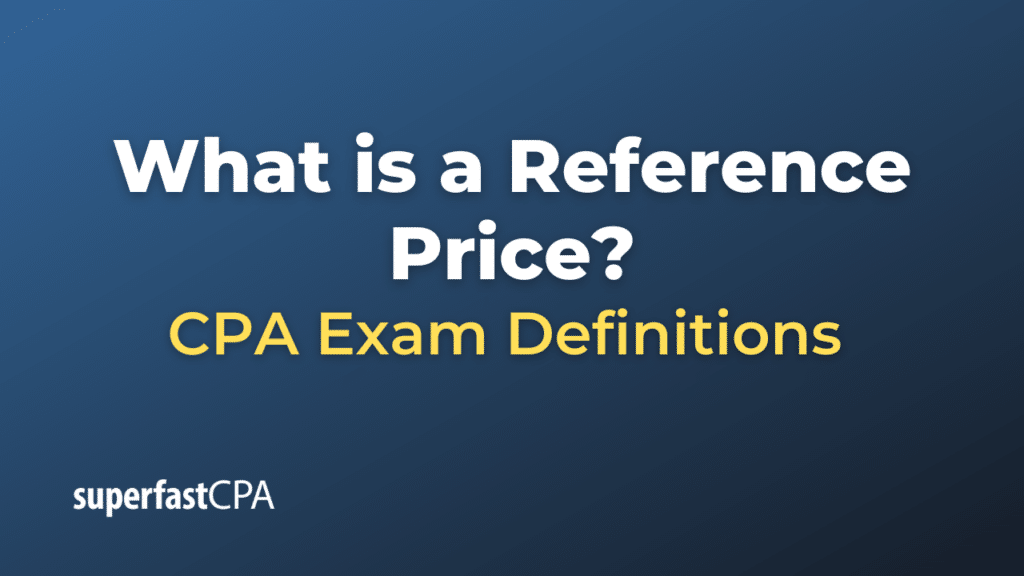Reference Price
A reference price is the price against which potential buyers compare the actual selling price of a product to determine its perceived value. In other words, it’s a benchmark or standard price in the minds of consumers that serves as a point of reference when assessing the value of an offering. Reference prices can be influenced by various factors and can come from both internal and external sources.
There are different forms of reference prices:
- Internal Reference Price: This is based on a consumer’s own experience, memory, or expectation. If you regularly buy a coffee for $4, that becomes your internal reference price for a coffee. If you then see a coffee offered for $3, you might perceive it as a good deal because it’s below your internal reference price.
- External Reference Price: This is provided by external cues, typically by the seller or the market. Common examples include:
- Manufacturer’s Suggested Retail Price (MSRP): A price suggested by the manufacturer which retailers can compare their selling price against.
- Competitor’s Prices: If a store highlights that their product is $50 while a competitor’s price is $60, that $60 becomes the external reference price.
- Discounts from List Price: When a store advertises “Was $100, Now $80,” the $100 is the external reference price.
- Historical Reference Price: Refers to the price that a consumer has paid in the past for the same or a similar product. For instance, if someone purchased a pair of jeans for $40 last year and finds a similar pair this year for $50, they may feel the new pair is expensive based on their historical reference price.
- Differential Price: The difference between a product’s selling price and its reference price. If the difference is positive (selling price is lower than the reference price), it often leads to a perceived bargain. If negative, the product may seem overpriced.
The concept of reference price is essential in pricing strategy and consumer behavior studies for several reasons:
- Perceived Value: The difference between the selling price and the reference price affects the perceived value of a product. A product priced significantly below the reference price might be seen as a great value, while one priced above might be perceived as overpriced.
- Price Positioning: Brands can position themselves as premium or value-based on how they set their prices in relation to reference prices.
- Promotional Strategies: Retailers often use reference prices in sales promotions to emphasize the value or savings to the consumer.
- Consumer Decisions: Consumers often use reference prices, consciously or subconsciously, as part of their decision-making process. The perception of a good deal can heavily influence purchasing behavior.
However, it’s crucial for businesses to use reference prices ethically and accurately. Misleading consumers with inflated reference prices to make current prices seem like a better deal can lead to legal repercussions and damage to brand reputation.
Example of a Reference Price
Let’s use the example of a clothing retailer during a holiday sale.
Imagine a clothing retailer named “Urban Threads.” They sell a popular line of winter jackets. In the summer months, they introduce the jacket at a price of $250. By the time winter starts, they’ve established that price as the regular selling point.
As the holiday season approaches, Urban Threads decides to have a sale. They mark the jacket down to $200 and place signs everywhere in the store and on their online page: “Winter Jacket Special! Was $250, Now $200! Save $50!”
In this scenario, the $250 is the reference price. It serves as a point of comparison for shoppers. Even if most consumers have not bought the jacket at the original price, the fact that it was “once” priced at $250 provides a value comparison.
When shoppers see the jacket at $200 with a reference price of $250, many will perceive it as a bargain. They feel they’re getting $250 worth of value for only $200, which can incentivize them to make a purchase.
Thanks to the reference price, Urban Threads might see a surge in sales of the winter jacket. Consumers feel they are getting a deal because they are comparing the sale price to the original price.
However, it’s essential for “Urban Threads” to have genuinely offered the jacket at $250 in the past. If they never intended to sell it at that price and merely used it as a reference to make the $200 seem like a better deal, this could be deemed as deceptive pricing, which could get them in trouble with consumer protection authorities and damage their reputation with customers.












